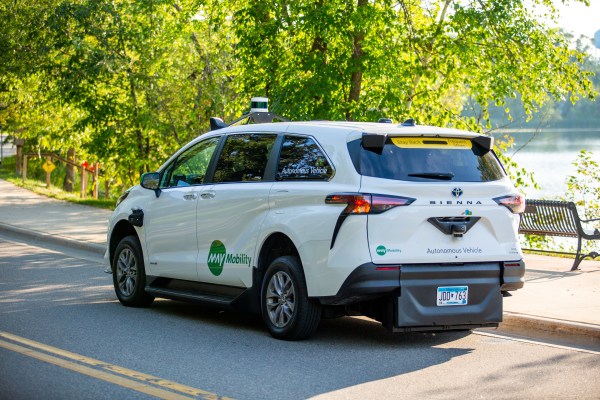Autonomous ride-hail and shuttle service May Mobility and transit tech provider Via are launching a small fleet of wheelchair-accessible autonomous vehicles in Grand Rapids, Minnesota.
Via, which started as an on-demand shuttle service before acquiring Remix, and May have been partnering for years to bridge the gaps in public transit systems with AVs. They have deployed services in Arlington, Texas, Ann Arbor, Michigan and Grand Rapids, Michigan, so the rural Minnesota city marks a new city for May Mobility’s operations.
The startup announced its plans in April to partner with BraunAbility, an American Disabilities Act (ADA)-compliant van manufacturer, to modify its fleet of Toyota Sienna Autono-MaaS (S-AM) vehicles to be wheelchair-accessible. The Grand Rapids project marks both the first time ADA-compliant autonomous shuttles will be put into deployment in the U.S., as well as May’s commercial debut of its Siennas.
When May’s service launches Wednesday, anyone within the 17-square-mile service area, which covers much of the small, rural city of Grand Rapids, will be able to book a free, on-demand, shared ride from one of five Sienna AVs using the May Mobility app. Riders who don’t have smartphones can also book a ride by calling 211.
The May/Via service is designed to augment existing public transit solutions, not replace them, so it will operate on weekday nights and weekends when other options aren’t available. Specifically, the shuttles will run from Tuesday to Friday from 2 p.m. to 10 p.m., Saturday from 10 a.m. to 10 p.m., and Sunday from 8 a.m. to 2 p.m.
Via’s AI-based booking and routing algorithm will help match riders headed in the same direction into one vehicle as they move between more than 70 pickup and drop-off locations. Those locations were identified based on the way people move as well as input from the community — places like restaurants, grocery stores, pharmacies, churches and fitness centers. And the shuttles don’t just follow pre-determined routes to each destination. They go where there’s rider demand and they factor in traffic conditions to find the best routes, said a May spokesperson.
May and Via say the shuttles are equipped with SAE Level 4 autonomy, which means they can handle driving in certain conditions without needing a human to take over. That said, a human safety operator will be present in each vehicle should a manual takeover be required. For example, May still requires operator approval on unprotected turns, and in low visibility situations, operators might take over unprotected turns, according to a spokesperson for May. Visibility issues and inclement weather might also require the human safety operator to take over for other driving tasks.
“Operating in winter climates like Grand Rapids will enable further learning around autonomy in more extreme weather conditions,” Edwin Olson, CEO of May Mobility, told TechCrunch. “May Mobility’s vehicles can handle cold weather and navigate winter challenges like snow drifts. Depending on the level of snow accumulation or downfall, we may choose to have the autonomous vehicle operators take over to ensure maximum safety for our riders and everyone who interacts with our vehicles.”
May has said it hopes to get to driver-out operations by 2023, and expects to continue launching its Siennas in other cities over the next year.
Earlier this month, Via powered the launch of a mixed AV and manually operated fleet of on-demand shared vehicles in Munich, Germany. While there are only two autonomous electric shuttles, built by France’s Easy Mile, Via said the fleet is set to expand in 2023.
